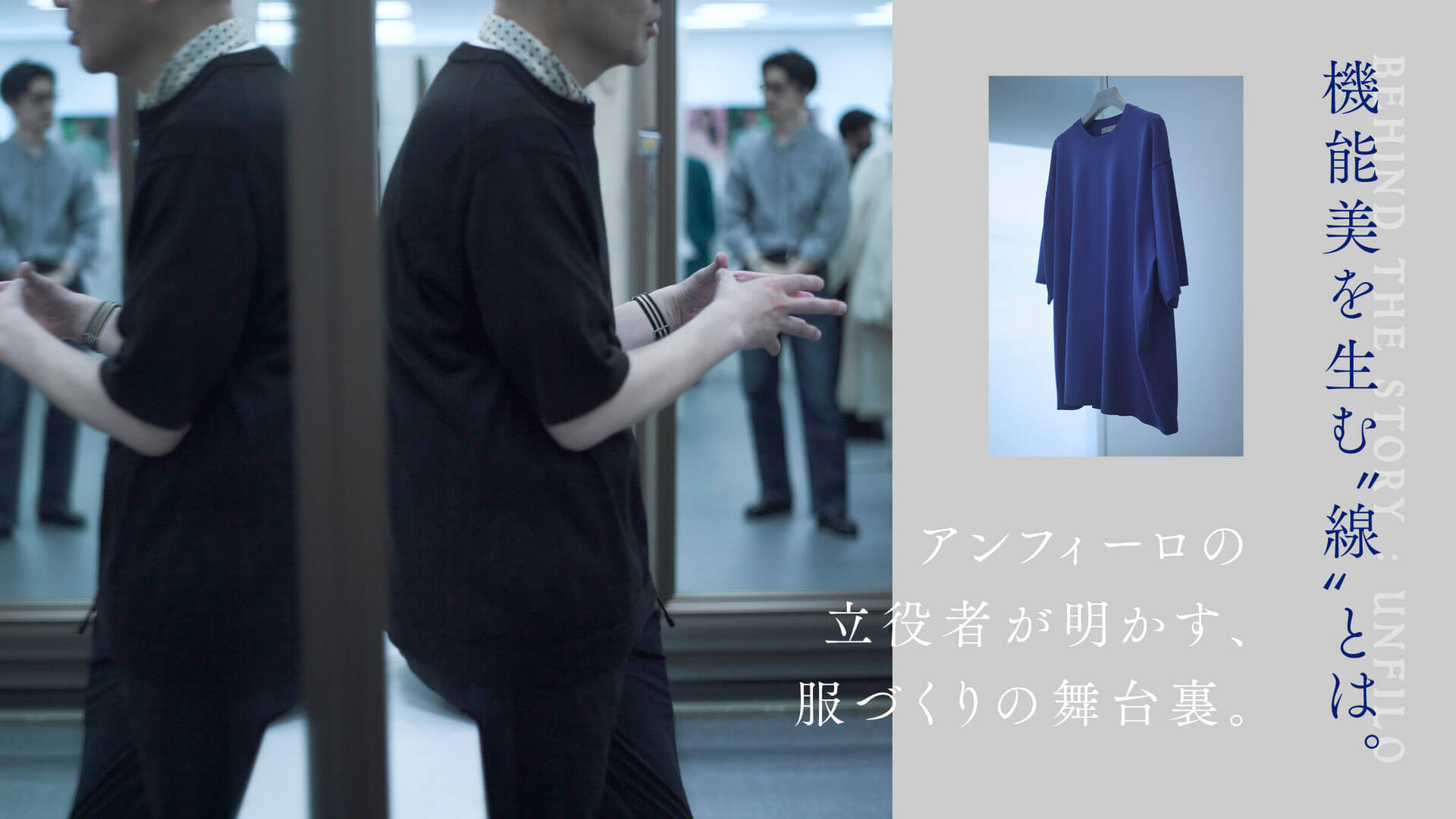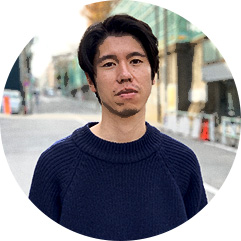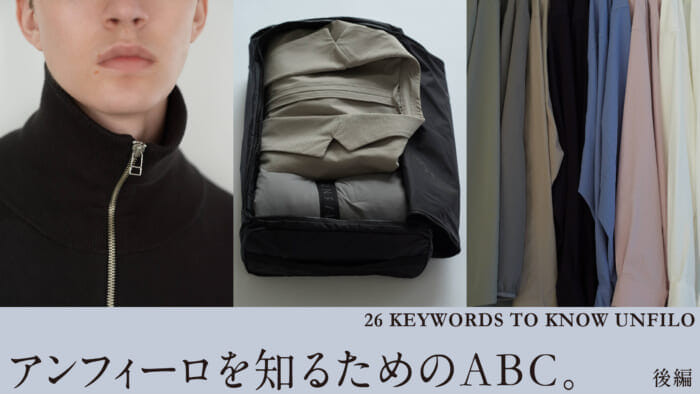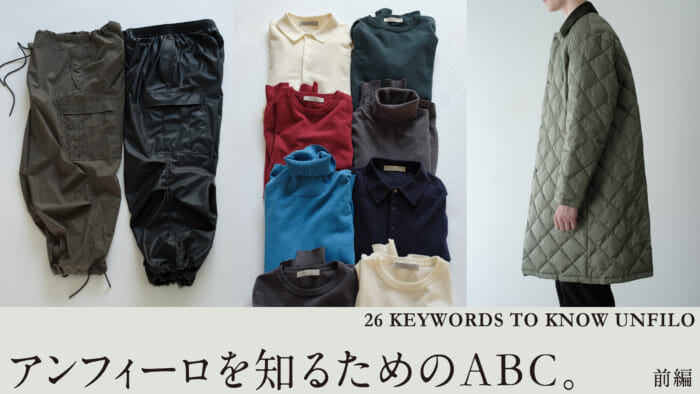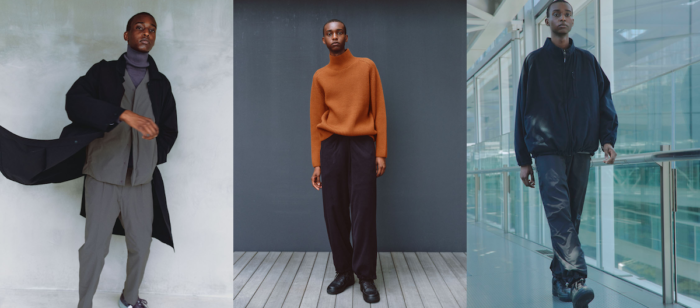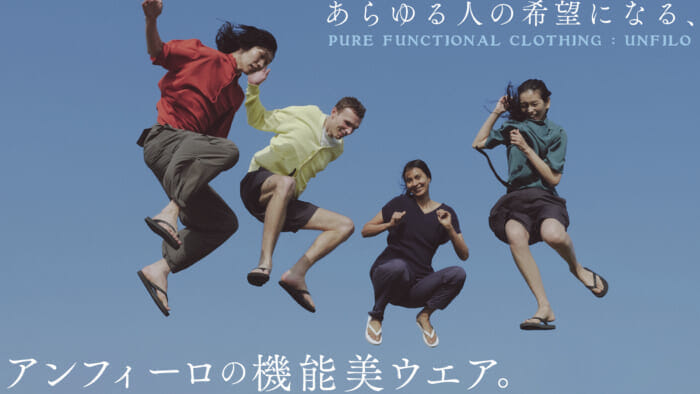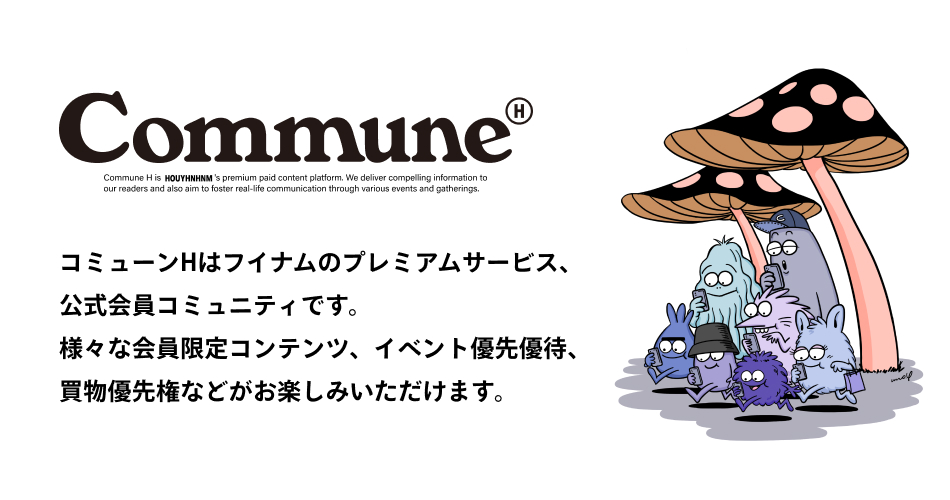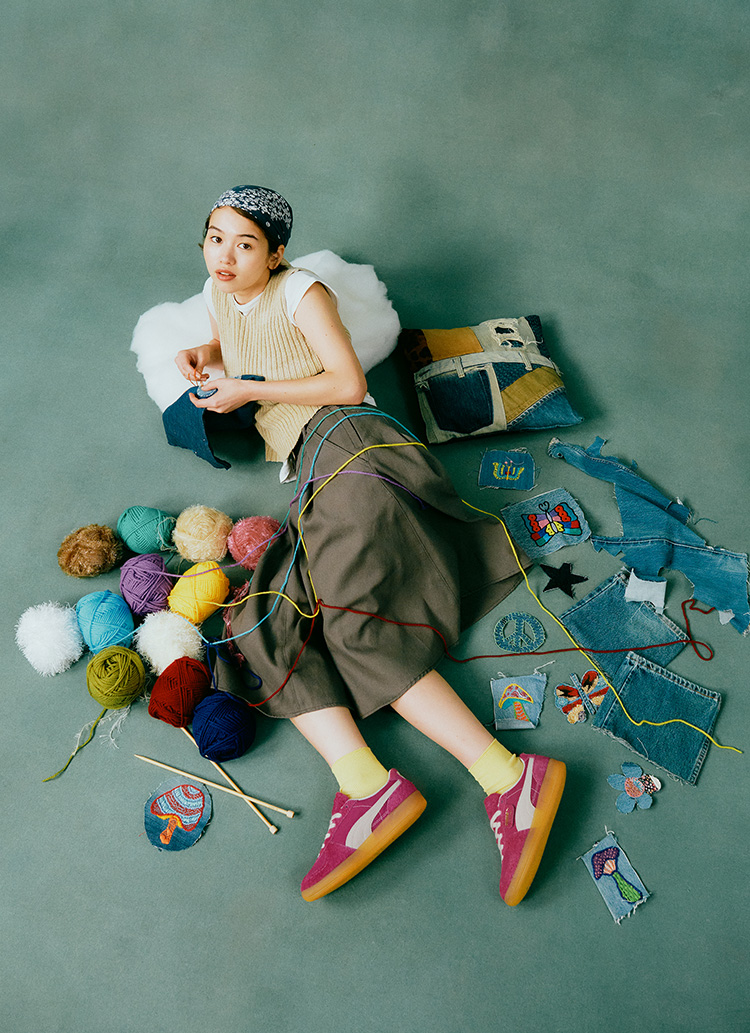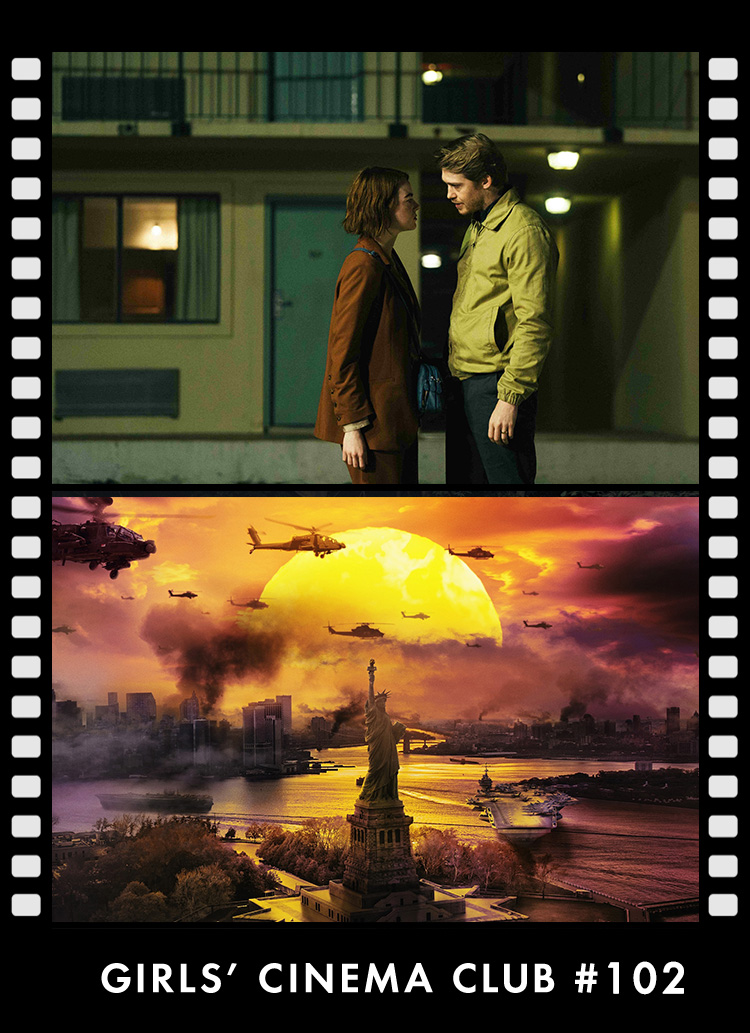Something with simple lines, sewn well , and even cooler as clothing.
This is the first time for you to visit such a place?
Row of trees: It's the first time . It was very interesting. A pattern came out of the printer, the fabric was cut, sewn, and toilets were made based on the pattern, and Mr. Koyama actually wore the toilets to make sure they were correct. It was impressive to see the designer himself wearing the garment to make sure it was right.


Once the numerical values of the pattern are entered through the computer, a pattern is automatically printed and the fabric is cut based on the printed pattern. At Onward Kashiyama, there are several printers that draw torsos of various body shapes and patterns, and the ability to work quickly makes it possible to create highly precise garments.
Small mountain: That place is the source of life.
Row of trees: . I was imagining models wearing them and matching them.
Small mountain: I see . There are several ways to do this, and basically the fitting model wears it.
South: That way there will be no blurring. Designers are sometimes concerned about comfort, so it is not uncommon for them to do the checks themselves. I also think it is more honest.
Anfilo's clothes have the characteristic of looking beautiful not only when standing, but also when moving.
Small mountain: . I think it's the amount of space between the body and the fabric. It should be neither too thick nor too thin. If it is too loose, it will not look good when you move, and if it is too thin, it will be too tight. I try to find the perfect line between the two.
South: Even with large-size clothes, if the garment is just large, it will look too loose, but we are conscious of tightening the garment in key areas. At first glance, the garment may look loose, but we have created darts and other tightening points to make the garment look sharp even though it is large.



The fabrics are cut into parts, sewn on the spot, and toilets are assembled. The pattern makers themselves do this as well, and the garments are beautifully tailored. Furthermore, he checks the difficult parts of the sewing process to ensure that the garments are made to his satisfaction.
Row of trees: Logically it is very simple, but when it comes to actually expressing it, it is difficult, isn't it?
South: . It is difficult unless you know the structure of the human body, or rather, the shape of the human body. If you don't know that, you will end up with darts in odd places, making the garment uncomfortable to wear, or with too much fabric left over.
Do you see the point of tightening from the beginning?
South: . you can see it, but of course we will fine-tune it. It is difficult to do it right from the start. . but the accuracy increases with each iteration.
Row of trees: . That is why cooperation between the two of you is key.
Small mountain: Yes, it is. It really is a team effort. There are two pattern makers under Mr. Minami, and I have a young designer who supports me as well. If the team does not work well together, it is impossible to make clothes well.
How many times do you repeat the process of drawing a pattern, printing out the pattern on a printer, assembling the toile, and checking it on the wearer?
South: It depends on the clothes. Sometimes it's just once and you're OK. . . or sometimes one thing gets on my mind and I get swamped. . then I repeat the process 7 or 8 times.


The toile is then tried on and the silhouette is adjusted. The pattern maker's skill is also demonstrated in detecting minor discrepancies at this stage. It is important to check with the eyes to make sure the garment is correct.
Do you redraw the lines then?
South: Yes . I would redraw all the lines involved in order to eliminate the area of concern.
Row of trees: It's hard work....
I think it's hard to find a place to land when you're swamped. How do you solve that?
South: . it's about knowing the limits already. The more transitions a garment has, the easier it is to express the silhouette. It is not easy to bring it to the shape you are aiming for with fewer parts. You need to have a variety of experiences and know how far you can go to express yourself. . At the same time, you need to have a proper understanding of the structure of the human body, otherwise you will end up with a terrible mess.
When you put it into the actual fabric, is it a world of your imagination as to how the finished product will look?

South: . Yes, there are some fabrics that cannot be used for this purpose. There is a technique called isekomi, which is often used for men's wear to create a three-dimensional effect, but there are some fabrics for which this is not possible. It is up to the pattern maker to create a good 3D effect on the fabric. I think that is where experience comes into play.
Row of trees: Do you have a unique way of making "Anfilo"?
South: . I am conscious of keeping the lines simple. The affordable price range is also an appealing feature of "Anfilo," isn't it? . Therefore, it is not possible to produce in a very elaborate factory. . If you draw too complicated lines, it's hard to convey the message. Therefore, it is important to keep the lines as simple as possible, and to make clothes that can be sewn well by anyone who is in charge, and that also look good as clothes.
That's a very deep story.
Small mountain: In that sense, it is in my mind not to force them to take care of various things. If a factory is going to overwork itself, I think it is better to keep things clean and simple.
Row of trees: As a hairdresser myself, if I do complicated perms or colors, only I can express that. . There are times when I have other staff members do it for me, so I try to keep it simple there. Even if the hair stylist puts a lot of effort into styling the hair, it is meaningless if the client cannot reproduce the look after returning home. I often think about this.

Small mountain: I don't know if I have been able to do it, but people have always said that it is more difficult to make something simple.
Row of trees: Something simple, yet beautiful and cool, may be attractive precisely because it is difficult to create.


